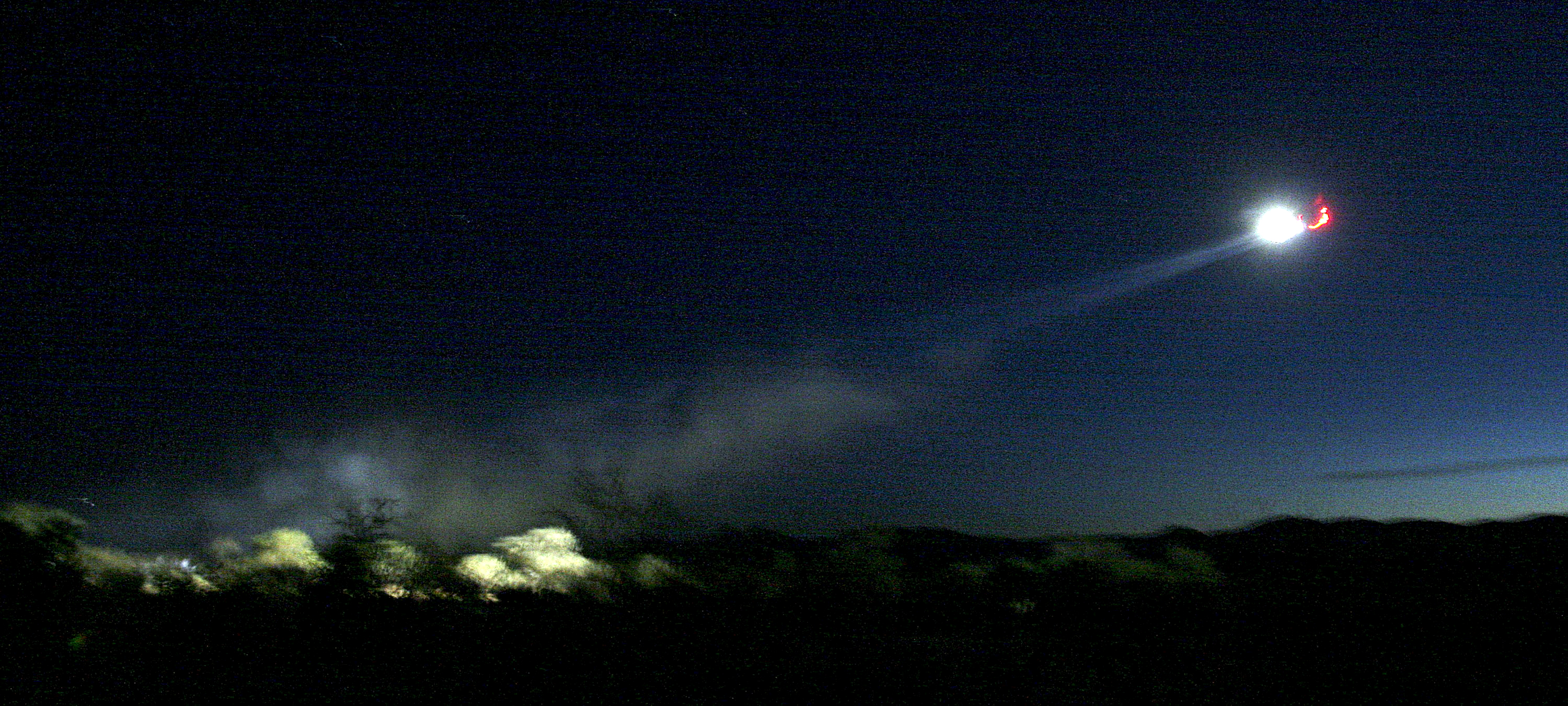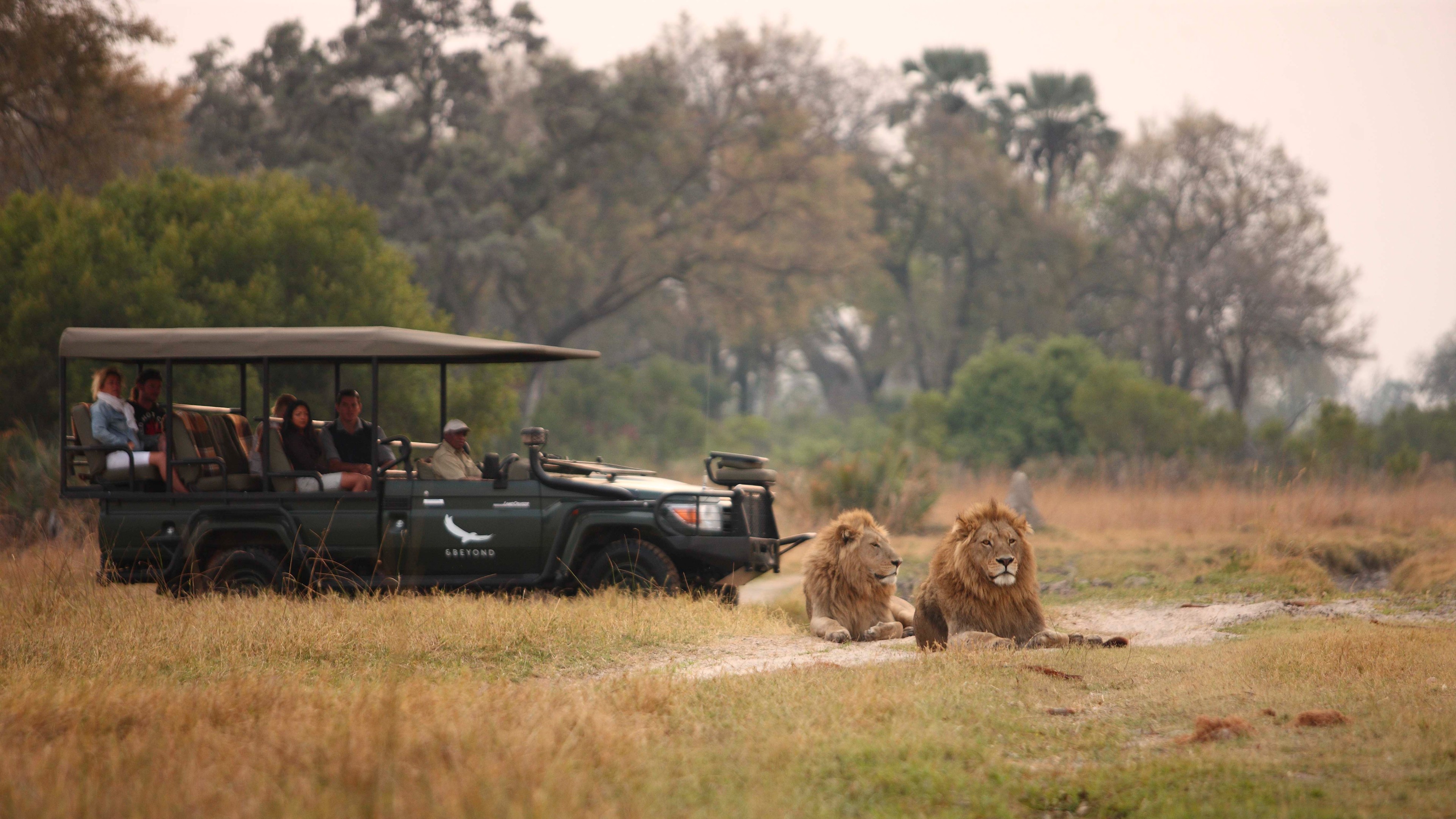When conspiracy theories inspire vigilante justice
Vigilantes have flocked to the Sonoran desert to guard the U.S.-Mexico border. They're convinced they're stopping a conspiracy of liberals and child sex traffickers.

Excerpted from an article that originally appeared in High Country News on Sept. 12, 2018. Reprinted with permission.
On May 31, a strange story aired on the nightly news in Tucson. KOLD News 13 reporter Kevin Adger told viewers that a local veterans' rights activist named Lewis Arthur had made a horrific discovery in the bushes beside a frontage road: a bunker used as a stopover by child sex traffickers. The reporter pointed out children's clothes, an old toilet seat, and a septic tank where, Arthur claimed, kids had been held against their will.
Arthur had stumbled across the camp while canvassing the area for homeless vets. He posted an outraged rant on Facebook and started getting comments — a lot of them. When he posted videos arguing that there were probably bodies buried at the camp and that it was part of a network of Arizona sex-trafficking sites, he topped 680,000 views in days.
The Week
Escape your echo chamber. Get the facts behind the news, plus analysis from multiple perspectives.

Sign up for The Week's Free Newsletters
From our morning news briefing to a weekly Good News Newsletter, get the best of The Week delivered directly to your inbox.
From our morning news briefing to a weekly Good News Newsletter, get the best of The Week delivered directly to your inbox.
There was just one problem with Arthur's story: It wasn't true. Tucson police and sheriff's deputies both investigated the site and found nothing more than a former homeless camp — no evidence of sex trafficking. Arthur then claimed he and two friends had found proof: a child's skull. Officers sent the skull to the Pima County medical examiner, who concluded that it had belonged to an adult and had been found miles away from the homeless camp.
The Arizona Daily Star and other local news outlets published stories debunking the claims. In a pre-internet world, the whole thing might have ended there, without any more newspaper ink or the involvement of the FBI. But in 2018 — at a time when social media, a conspiracy-minded president, and the erosion of trust in public institutions are providing fertile ground for wild-eyed theories — the story kept gaining life.
From as far away as Australia, believers traveled to the Tucson desert to deliver vigilante justice to the sex traffickers. Their stories became more elaborate: The skull became a partial corpse. One person told me it was so fresh when it was found, they saw it "dripping." The camp became evidence of a massive pedophile ring implicating Cemex, the Mexican cement company that owns the property. Some of Arthur's followers found more bones and suggested they came from people who had died terrible deaths. But the medical examiner analyzed them, too, and concluded they were animal remains. At least one was from a deer.
I first heard of Lewis Arthur in early June, when JJ MacNab, an expert on anti-government movements, tweeted about his "one-sided standoff." It caught my eye because Arthur had connections to the Bundy family, the Nevada ranchers at the center of two recent armed confrontations with federal land managers. Arthur had traveled to Bunkerville, Nevada, in 2014 to help prevent the Bureau of Land Management from removing the cows Cliven Bundy had illegally grazed for decades. Two years later, he showed up at the armed occupation of Oregon's Malheur National Wildlife Refuge led by Bundy's sons.
A free daily email with the biggest news stories of the day – and the best features from TheWeek.com
But even in those far-right circles, Arthur is considered a fringe character, known as "Screwy Louie." At Bundy Ranch, he reportedly called police to the protest site, and in Oregon, he tried to "help" an acquaintance, militiaman Ryan Payne, and "women and children" by rescuing them from the refuge, the occupation of which Arthur believed was misguided. Bundyites kicked him out of both events.
Arthur, 39, is 6 foot 2, with red hair, freckles, and hazel eyes. His full name is Michael Lewis Arthur Meyer, but "Michael Meyer," he says, is an entirely different man. The personal story he tells is one of victimhood and redemption. On a walk through the desert this summer, he told me that he's originally from Ohio, was sexually abused as a kid, and later fell into selling drugs. He now lives in Tucson, where his wife works in the pharmaceutical industry, supporting him and his daughter.
Arthur, who is not a veteran, started the group Veterans on Patrol (VOP) in 2015, to provide temporary shelter to homeless vets across Arizona, in Mesa, Prescott, Nogales, and Tucson. Helping vets was a worthy cause, but Arthur seemed to be searching for something more. In recent years, he also started climbing towers wielding upside-down American flags to draw attention to homelessness and suicide among veterans. In 2015, he perched atop an 80-foot-tall light pole in Surprise, Arizona, for four hours. This July, he occupied a tower on the Cemex property for nine days, demanding officials investigate child sex trafficking.
After he announced his discovery of the sex camp, Arthur started gaining the attention he seemed to seek. Within 24 hours, he had 55,000 Facebook followers, which grew to 77,000 in July. "For him this is a religious mission," tied to his Christian faith, says MacNab, who has followed Arthur's activities for several years. "He has a huge heart. But he's got this other side that is desperate for drama and attention."
And what about his followers? I wondered. What compelled them to sprint to the scorching desert to join one man's fantastical crusade? And what does it mean for communities when the unreality of the internet so easily crosses the threshold into real life?
It was 105 degrees on the June afternoon I arrived at Camp Pulaski, the base Arthur set up near Picture Rocks, a Tucson suburb, from which to launch his new mission: intercepting sex traffickers coming from the southern border. In the early mornings and after nightfall, the camp's residents patrol on foot and in ATVs, trucks, and jeeps. "If they want to come into our backyard," Arthur declared via livestream, "we'll give them a fight."
Camp Pulaski consisted of a couple of large tarp structures and five or six camping tents clustered almost a mile off a county road. A large map of the Sonoran Desert hung in one tent, with pushpins marking the locations of additional camps Arthur said he'd established. That afternoon, I did what everyone else was doing: I sat in a folding chair, drank water, and asked people why they'd come.
I sat next to a 70-year-old woman from Colorado Springs, who wore peach lipstick and cowboy boots. In between bites of Starkist tuna, she told me she'd heard about the mission on Facebook and felt a personal connection. "I had been in an abused situation with my mother," she said. "It makes me want to be able to do something to those people." Several people I talked to were driven by curiosity; they saw strange stories on Facebook and wanted to find the truth. There were longtime friends of Arthur's who had found a home at his shelters or helped with Veterans on Patrol. And there were also hard-core conspiracy theorists, who believed the "sex camp" was part of a global pedophile ring run by rich elites.
Pedophile rings allegedly involving high-profile Democrats are central to some of the conspiracy theories that have metastasized for years in right-wing online forums and social media. And the Tucson gathering wasn't the first time this online chatter had real-world consequences. The infamous 2016 incident known as "Pizzagate" — where a fantasy about Hillary Clinton sexually abusing minors in a Washington, D.C., pizza joint prompted a man to barge into the restaurant and fire an AR-15 while looking for victims — was the fruit of the same poisonous tree.
After a couple of days at Camp Pulaski, it started to seem as if its denizens were living in a dark version of the smartphone game Pokémon Go, in which fictional creatures populate the physical landscape players move through. A group of patrollers saw a business sign showing a human eye and believed it was the mark of a secret society. When they saw white crosses painted or laid down in the desert sand — signs experts say are used in aerial mapping — they interpreted them as the insignia of sex traffickers.
One day, a man named Frank gave me a ride from Camp Pulaski to the main road and talked about how many kids go missing every year where he's from in West Virginia. (Most people I met at Camp Pulaski spoke on the condition that their last names or full names not be revealed.) Then he told me that Anthony Bourdain, the famous chef who had committed suicide days earlier in France, had actually been murdered. Authorities, he claimed, had covered it up. "If you're really looking for the truth, I will stay here another day and will pull up as much information as I can for you," Frank said.
Believers see these imaginary global webs of malfeasance as huge and intangible problems, like climate change. For Frank and others I met at Camp Pulaski, Arthur's call to arms offered a direct answer, one five-hour desert patrol at a time.
In September, Veterans on Patrol was still working from Camp Pulaski; Arthur says they'll stay for three years. They have now traveled as far south as the Mexican border, placing American flags atop hills believed to be lookouts used by migrants and cartels. The fringe group that gathered in the desert never seemed to grow to more than a few dozen, and most in Tucson never knew of its existence.
Still, it's worth paying attention to what's happening here. It appears to be an extreme expression of broader trends, such as the eroding trust in traditional institutions like government, science, and journalism, and the increasing reliance — by people across the political spectrum — on alternative news sources and social media for information. The Rand Corp., a global policy think tank, called this phenomenon, along with an increasing disagreement about basic facts, "truth decay" in a report earlier this year.
"I think individuals are finding only a very few people they trust, distilling into smaller communities," said Rutgers University media studies associate professor Jack Bratich, describing a pattern that seemed evident in how Arthur's followers and his opposition organized into factions online. "I don't think it's just filter bubbles, where you get only the news you want, but clusters of information communities."
This social splintering, along with "truth decay," increasingly pervades American life. Donald Trump rode baseless claims that President Barack Obama was not born in the U.S. all the way to the White House. The normalization of conspiratorial thinking raises questions about whether ideas incubating in fringe circles like Arthur's may find pathways to wider audiences.
Here in the desert, it seemed fortuitous that the consequences had not yet included violence. Boise State University associate professor Seth Ashley, who recently co-authored research on news literacy and conspiracy theories, pointed out that Dylann Roof, the white supremacist who killed nine black parishioners in a South Carolina church in 2015, similarly projected misinformation he found online onto the world around him.
"(Roof) Googled black-on-white crime and got all these links about the prevalence of black people killing white people," Ashley said. "It's totally false." And yet it shaped his worldview and his actions, and nine people died. "The content and the behavior is all connected," Ashley explained. "It's great that we can all voice our opinions and do our own research and find our own information. But that also makes it harder than ever to sort truth from fiction."
One summer evening at dusk, I visited the notorious Cemex lot, finding it empty except for an unmarked cruiser. Long shadows yawned over the dirt and asphalt. The former homeless camp was tucked into a brambly slope, invisible from the road. Nearby, a casino's billboard promised fast cash: "Your shot at $1,000,000!" A dilapidated blue children's pool full of gravel and old chunks of cement sat next to the locked fence. It was hard to imagine this place had provoked such distracting drama.
"They're out there chasing ghosts," Scott Cutright, a veteran who spent a few weeks in one of Arthur's shelters this year, had told me. "That's the term you use in the military. You hear things go bump in the night, you think it's the enemy, but in reality it's your imagination because you're scared or you're amped up. You think there's something out there, you pour resources into (it). But in reality, it's ghosts."
Read the original at High Country News.
-
 The Night Manager series two: ‘irresistible’ follow-up is ‘smart, compelling’ TV
The Night Manager series two: ‘irresistible’ follow-up is ‘smart, compelling’ TVThe Week Recommends Second instalment of the spy thriller keeps its ‘pace’, ‘intrigue’ and ‘sly sexiness’
-
 11 hotels opening in 2026 to help you reconnect with nature
11 hotels opening in 2026 to help you reconnect with natureThe Week Recommends Find peace on the beaches of Mexico and on a remote Estonian island
-
 Zimbabwe’s driving crisis
Zimbabwe’s driving crisisUnder the Radar Southern African nation is experiencing a ‘public health disaster’ with one of the highest road fatality rates in the world